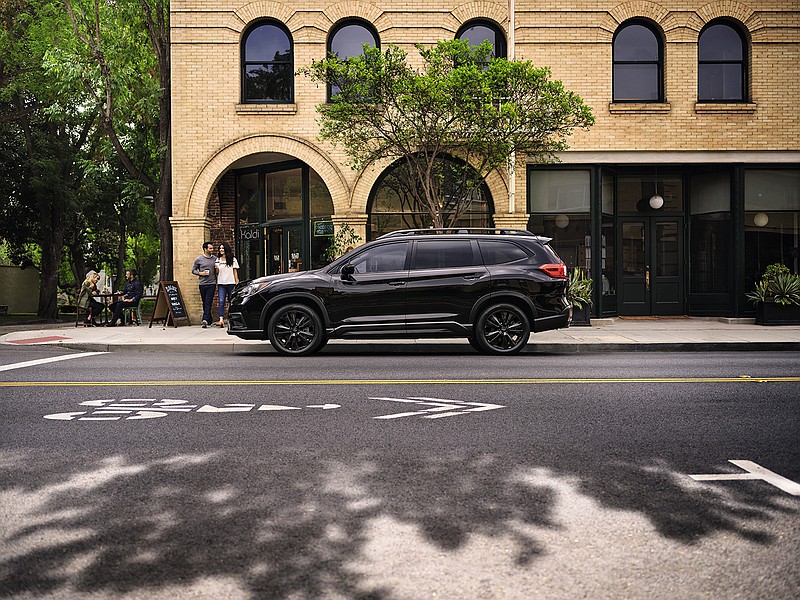The tsunami of supply-chain disruptions that emptied dealer lots and rocketed car prices enough to pump up the consumer price index may abate around Christmas.
Top leaders at Ford, General Motors and Honda, this week said that semiconductor supply disruptions, which stalled production and forced automakers to build and park tens of thousands of vehicles lacking key components, are improving.
"As we look to the fourth quarter, a steady flow of vehicles held at plants will continue to be released to dealers," said Steve Carlisle, GM executive vice president and president of GM of North America. "We are restarting production at key crossover and car plants, and we look forward to a more stable operating environment through the fall," Carlisle told the Detroit Free Press.
Ford CEO Jim Farley made similar comments in a press call announcing a $13.4 billion investment in electrification, including $90 million in Texas to train technicians for the company's growing portfolio of electric vehicles.
Vehicles today are comprised of hundreds of widgets, from ignition systems to braking components, that are built and assembled abroad. A single control module may have parts from three suppliers, all in countries ravaged by COVID and where little vaccine is yet available.
All that gets screwed, clipped, and glued together and put on a container ship, put on a truck, and shipped to American assembly plants. Shortages of dockworkers and truck drivers have created massive backlogs of everything that containers ships contain and truckers truck. That's one reason why the price of everything is going up.
In August, the Consumer Price Index rose a hearty 5.3%, according to the Labor Department's Bureau of Labor Statistics. The largest chunk of that was energy prices, followed closely by used car prices, which shot up 31%, and new car prices, which rose 7.8%, the largest 12-month increase since June 1981, the same month Nolan Ryan eclipsed Early Wynn as baseball's all-time walks leader. Both won more than 300 games, so there's a lesson in overcoming adversity.
Which is exactly what automakers and dealers have done. Though global production is on track to be 30 percent below the 98 million cars, SUVs, and light trucks built on the planet in 2019 BC (Before Covid), the companies are reporting robust profits in quarterly reports that were due last week.
In June, according to Edmunds.com, the average new car transaction price was $41,000, nearly identical to the median sticker price of $41,500. Incentives? Forget it unless it's for a model so undesirable even the rental car companies don't want it.
A few automakers are offering "private" incentives, meaning not advertised, to entice buyers who have placed orders to accept one that is on the lot. Ford will give you $2,000 to accept a vehicle spec-ed by the general manager instead of the vehicle of your dreams.
What's a buyer to do? Kelly Blue Book surveyed its readers and found half have decided to wait until things return to normal.
That's good advice.
As a corollary, you might consider the plan cooked up by Beautiful Blonde. We have at least one more car than we need. The better of the tow is her low-mileage, one-owner, garaged, immaculately maintained, 2010 Toyota Camry. We're going to sell it, put the money in a CD, and wait.
In the driveway this week:
Ascent best SUV you should never buy
Color me perplexed by the Subaru Ascent; a perfectly lovely three-seat SUV that has been gobbled up by most unlike-Subaru gremlins.
When first I laid hands on one for a brief test drive two springs ago, I was wowed by the Ascent's comfortable and quiet ride, gentle road manners, nicely appointed interior, smoothly powerful drivetrain, and high level of standard safety gear.
Thus, when one finally landed in my driveway, I had high expectations. They were not met.
On closer inspection, we found the rear storage area to be cramped, capable of carrying less cargo than top competitors, such as the Kia Telluride, Hyundai Palisade, Toyota Highlander, Mazda CX-9, Kia Sorento, Honda Pilot, and Chevy Traverse.
Selling for between $32,295 and $45,445, the Ascent is on par with the class leader, the Telluride. With a combined fuel economy of 22 mpg, it is a hair more efficient than the competition. That's where the differences end.
The Telluride's interior is far more creative and evocative. Controls are more user-friendly, thoughtful features abound, the cargo space is massive, and the software is light years ahead.
Both vehicles, for example, are equipped with lane-keep assist. The Ascent bounces from lane marking to lane marking like a toddler learning to walk, and it beeps each time it approaches a side marker. The Telluride keeps itself nicely balanced in the middle of the lane and does not bother one with irritating alerts because it does not need to.
Another huge difference is that the Ascent draws its power from a 260-hp turbocharged 2.4-L flat-four. Power is routed to all four wheels through a continuously variable transmission. The Telluride motivates down the road by way of a naturally aspirated 291-hp 3.8-L V-6 hooked to an eight-speed transmission.
That is an enormous difference. I distrust small, turbocharged engines because they have to work so much harder. Internal compression is much greater. Once oil begins to slip through valves and oxygen sensors, all kinds of bad things begin to happen.
There are many things auto writers do not know, chief among them reliability. We can tell you how a vehicle looks, feels, smells, and drives fresh from the factory, but we have no idea whether they will stand up. I have no direct knowledge that there is anything defective about Subaru's 2.4 turbos, but I can tell you that multiple manufacturers have settled class-action lawsuits involving turbocharged engines, among them Subaru.
Interesting note from the research: GM successfully defended itself in one instance, saying its warranty only covered defects in assembly, not design. Read the fine print.
With engines, it's not just wear and tear. Size matters. A smart way to spare transmission wear is to use engine braking. As someone who has used this technique at ridiculous speeds through winding roads, I can tell you, small-displacement engines don't do that well. They whine, but they don't slow.
Consumer Reports and JD Power both give the Ascent poor marks for reliability, mainly because first-year models had a litany of bugaboos, from a battery that quickly discharges when the rear hatch is left open to a windshield that cracks easily (figure $650 for the glass which houses electronics and another $165 to recalibrate them.) Electronics glitches also bedevil Ascent owners.
Though the Ascent can tow up to 5,000 lbs., Car and Driver found that the small engine and CVT only returned around 9 mpg under load.
Finally, one is compelled to note the Ascent comes with 3-year/36,00-mile basic and 5-year/60,000-mile powertrain warranties, Kia warranties the Telluride with a 5-year, 60,000-mile basic, and a 10-year, 100,00-mile powertrain warranty. (Read the fine print. If you sell the Telluride, the powertrain warranty converts to 5-years/60,000 miles. Kia gets out from under that warranty with the second owner).
Me? I prefer to buy a Toyota or Honda and not have to worry about powertrain warranties. There was once a time when I would have said that about Subaru.


